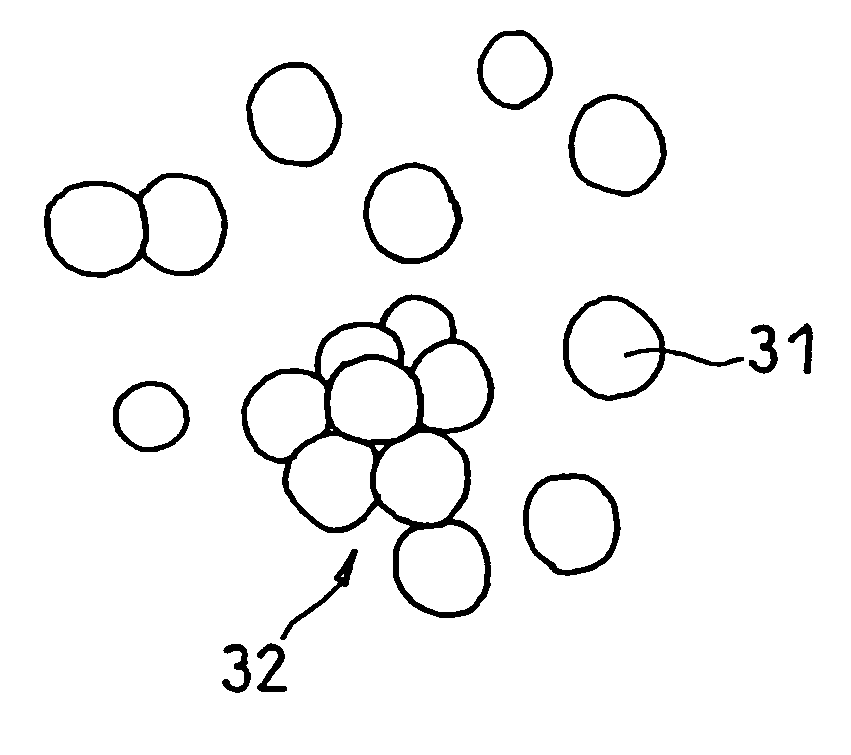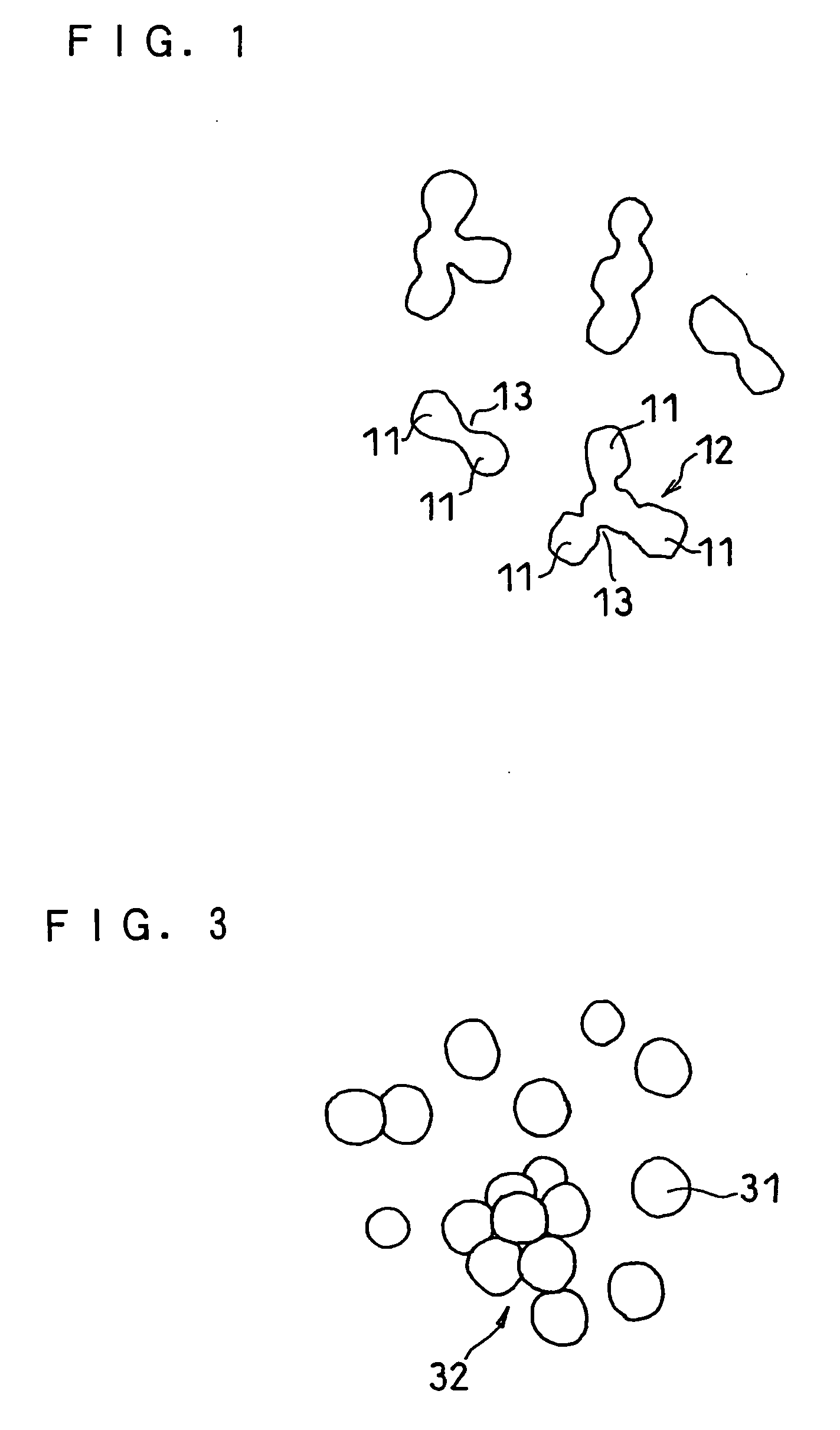Secondary battery and method for producing the same
a secondary battery and a technology for secondary batteries, applied in the field of secondary batteries, can solve the problems of low porosity of the void volume in the porous film, insufficient charge/discharge characteristics and high-rate charge/discharge characteristics under low temperature environments of the secondary battery, etc., to improve the safety of the battery, improve the large-current discharge characteristics, and high porosity
- Summary
- Abstract
- Description
- Claims
- Application Information
AI Technical Summary
Benefits of technology
Problems solved by technology
Method used
Image
Examples
example 1
(I) Preparation of Ceramic Particles including Polycrystalline Particles
[0076] Here, ceramic particles including α-alumina were prepared.
[0077] First, aluminum tributoxide, which is aluminum alkoxide, was provided. Pure water was added to aluminum tributoxide, and the whole was subjected to hydrolysis to form an alumina gel, which was then dried. The thus obtained dry gel was used as the ceramic precursor.
[0078] Subsequently, the dry gel serving as the ceramic precursor was fired at 1200° C. for three hours, thus obtaining a fired material comprising α-alumina. As a result of determining the average particle size of the single crystal cores of α-alumina from SEM pictures for the obtained fired material, it was about 0.2 μm.
[0079] The obtained fired material was crushed with a jet mill. Here, the particles having the respective bulk densities and BET specific surface areas shown in Table 1 were obtained by controlling the crushing conditions such that the bulk density of the cer...
example 2
[0100] Here, ceramic particles including α-alumina were also prepared.
[0101] First, ammonium dawsonite, which is aluminum ammonium salt, was provided as the alumina precursor. This was fired at 1200° C. for three hours, thus obtaining a fired material comprising α-alumina. As a result of determining the average particle size of the single crystal cores of α-alumina from SEM pictures for the obtained fired material, it was about 0.1 μm.
[0102] The obtained fired material was crushed with a jet mill. Here, the particles having the respective bulk densities and BET specific surface areas shown in Table 2 were obtained by controlling the crushing conditions such that the bulk density of the ceramic particles was 0.05 to 1.2 g / cm3 and the BET specific surface area was 3.5 to 25 m2 / g. The bulk density was also measured here by a static method using a “powder tester (product name)” manufactured by Hosokawa Micron Corporation. Observation of the obtained particles with SEM pictures confirm...
example 3
[0114] A lithium ion secondary battery was fabricated without using a sheet-like separator.
[0115] Here, the separator comprising a 15 μm thick microporous sheet made of a polyethylene resin was not used, and instead a porous film was formed in a large thickness on the negative electrode using the slurry A3 of Example 1. The thickness of the porous film after drying was 20 μm.
[0116] The obtained test battery exhibited a discharge capacity of 1830 mAh during discharging at a low temperature and 2 C rate, as with the battery fabricated using the slurry A3 in Example 1. Although a conventionally used sheet-like separator is expensive, it did not need to be used in the present example, so that the battery could be produced at low cost.
PUM
| Property | Measurement | Unit |
|---|---|---|
| Density | aaaaa | aaaaa |
| Specific surface area | aaaaa | aaaaa |
| Porosity | aaaaa | aaaaa |
Abstract
Description
Claims
Application Information
 Login to View More
Login to View More - R&D
- Intellectual Property
- Life Sciences
- Materials
- Tech Scout
- Unparalleled Data Quality
- Higher Quality Content
- 60% Fewer Hallucinations
Browse by: Latest US Patents, China's latest patents, Technical Efficacy Thesaurus, Application Domain, Technology Topic, Popular Technical Reports.
© 2025 PatSnap. All rights reserved.Legal|Privacy policy|Modern Slavery Act Transparency Statement|Sitemap|About US| Contact US: help@patsnap.com



